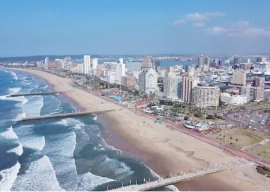
“A quantity of 67 million acre feet (MAF) of water will be available for the Kharif season and 10 MAF will be wasted as water will flow into the sea due to insufficient storages,” the Irsa advisory committee observed in a meeting here on Monday with chairman Mohammad Nasim Bazai in the chair.
Apart from this, the committee was of the view that an average 10% of water would go to waste in the wake of system deficiencies – theft and leakage – during the season, which runs from April to September.
Committee members recalled that the Irsa technical committee had anticipated a water loss of 30% in the Indus system and 20% in the Jhelum system in early Kharif. Later in the season, the loss would come down to 20% in Indus and 15% in Jhelum.
According to sources, Sindh and Balochistan got engaged into a controversy during the meeting when the latter alleged that Sindh had stolen its water during the just-ended Rabi sowing and harvest season.
Irsa Chairman Bazai assured Balochistan that an inquiry was under way to address the issue of water theft. Balochistan would get its entire share in the Kharif season, he stressed.
Later talking to the media, Bazai said Irsa’s advisory committee had unanimously approved the water share of provinces in Kharif, according to which Punjab would get 33.94 MAF, Sindh 30.49 MAF, Khyber-Pakhtunkhwa 0.82 MAF and Balochistan 2.56 MAF.
“Provinces will receive a total of 67 MAF in the Kharif season,” he said, adding 10 MAF would go into sea due to shortage of dams while 10% of water would be wasted due to system losses. This season, the provinces would get an additional 20 MAF, he said.
Earlier, the technical committee in its last meeting had estimated that the country would have 108 MAF of water in its rivers in the season. In addition to this, Mangla Dam would have carryover stock of 1.5 MAF and Tarbela Dam 0.50 MAF. The carryover stock is the result of better inflows and recent rains.
“This time, we will be easily able to fill the dams to the brim. Water level will be at maximum at 1,242 feet in Mangla Dam and will be at 1,550 feet in Tarbela reservoir,” an Irsa official said.
Owing to improved water supply, the country would have enough water to generate hydroelectric power to mitigate looming shortages,” the official added.
In Monday’s meeting, Irsa members noted that the Rabi season faced only 7% water shortage, therefore, wheat production would be better due to improved water supplies.
Published in The Express Tribune, April 1st, 2014.
Like Business on Facebook, follow @TribuneBiz on Twitter to stay informed and join in the conversation.


















COMMENTS
Comments are moderated and generally will be posted if they are on-topic and not abusive.
For more information, please see our Comments FAQ